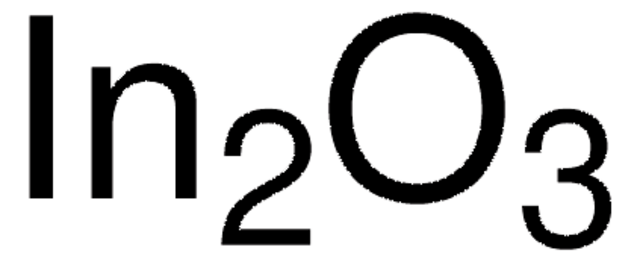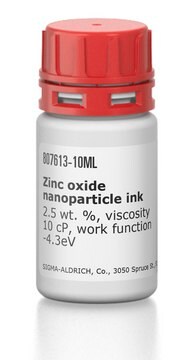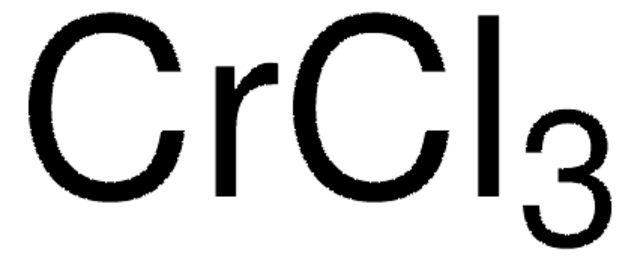Wichtige Dokumente
632317
Indium(III)-oxid
nanopowder, <100 nm particle size (TEM), 99.9% trace metals basis
Synonym(e):
Diindium trioxide, Indium sesquioxide
About This Item
Empfohlene Produkte
Dampfdruck
<0.01 mmHg ( 25 °C)
Qualitätsniveau
Assay
99.9% trace metals basis
Form
nanopowder
Eignung der Reaktion
reagent type: catalyst
core: indium
Partikelgröße
<100 nm (TEM)
Dichte
7.18 g/mL at 25 °C (lit.)
SMILES String
O=[In]O[In]=O
InChI
1S/2In.3O
InChIKey
SHTGRZNPWBITMM-UHFFFAOYSA-N
Suchen Sie nach ähnlichen Produkten? Aufrufen Leitfaden zum Produktvergleich
Allgemeine Beschreibung
Anwendung
- Amine Functionalized Surface Frustrated Lewis Pairs for CO2 Photocatalysis: Discusses the enhancement of photocatalytic performance for CO2 reduction using indium oxide hydroxide with amine-functionalized surface frustrated Lewis pairs (Q Guan et al., 2024).
- Enhancing Gas Sensing Performance through UV Photoexcitation: Explores the improvement of room-temperature gas sensing capabilities of metal oxide semiconductor chemiresistors, including indium(III) oxide, by 400 nm UV photoexcitation (S Paul et al., 2024).
- Indium(III) Complexes in Industry and Nanoparticle Synthesis: Reviews the use of trivalent indium complexes as catalysts and precursors for various industrial applications and the synthesis of nanoparticles like indium oxide (TO Ajiboye et al., 2024).
- Ag/In2O3 Inverse Opal Synthesis: Details the synthesis and perspectives of silver/indium oxide inverse opal structures, highlighting their potential in semiconductor applications due to their optical properties (AV Lyutova et al., 2024).
- Photocatalytic Generation of Hydroxyl Radicals and Manganese Species: Investigates the use of indium oxide in enhancing the photocatalytic performance of permanganate for efficient micropollutant removal under visible light (J Li et al., 2024).
Lagerklassenschlüssel
11 - Combustible Solids
WGK
WGK 3
Flammpunkt (°F)
Not applicable
Flammpunkt (°C)
Not applicable
Persönliche Schutzausrüstung
dust mask type N95 (US), Eyeshields, Gloves
Hier finden Sie alle aktuellen Versionen:
Besitzen Sie dieses Produkt bereits?
In der Dokumentenbibliothek finden Sie die Dokumentation zu den Produkten, die Sie kürzlich erworben haben.
Kunden haben sich ebenfalls angesehen
Unser Team von Wissenschaftlern verfügt über Erfahrung in allen Forschungsbereichen einschließlich Life Science, Materialwissenschaften, chemischer Synthese, Chromatographie, Analytik und vielen mehr..
Setzen Sie sich mit dem technischen Dienst in Verbindung.











